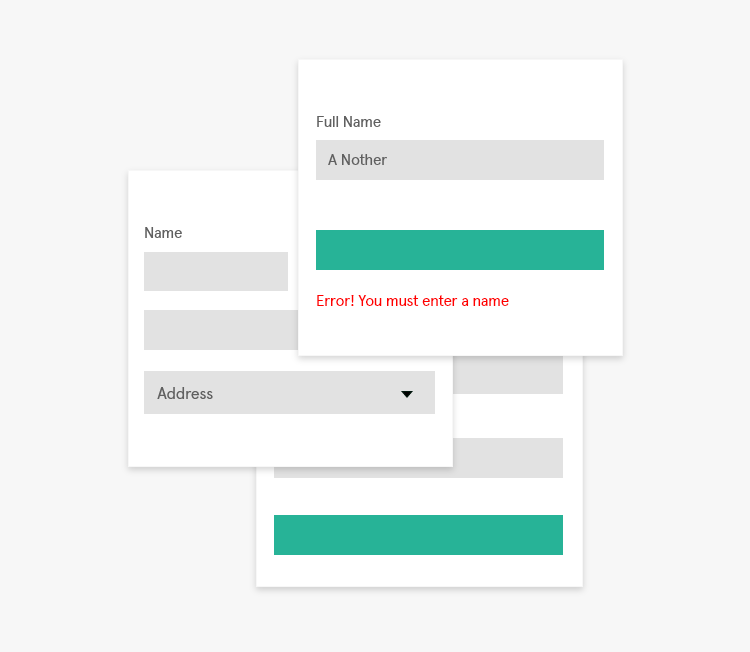Chief Marketing Officers (CMOs) could be forgiven for thinking the online registration process has little impact on the overall customer experience (CX). However, this step is typically the pivotal point in the early customer journey and often one of the biggest stages of abandonment.
The registration process is normally the first time a potential customer has to commit to sharing details. If the process is convoluted, untrustworthy or generally clunky, it can easily deter buyers from continuing, while at the same time create a negative brand impression.
Surprisingly, the registration experience is rarely put to the test with any rigour, when compared with other elements of overall CX design. Yet, 56% of consumers say they’ve abandoned an online service because of a login process that they’ve found too frustrating to complete – according to research from Ping Identity. This equally applies to loyal customers who want and expect a personalized buying journey: 32% of customers will abandon a favourite brand after just one bad experience.
There’s no doubt that a cumbersome registration process has become one of the biggest factors driving high abandonment rates during the customer journey. In this blog, we’ll look at how to identify opportunities to improve registration. We’ll also explore what CMOs and CX professionals can do to ensure it doesn’t kill their customer experience, before it’s really begun.
56%
consumers say they’ve abandoned an online service because of a login process that they’ve found too frustrating
32%
of customers will abandon a favourite brand after just one bad experience
The importance of a frictionless
customer experience
Online retailers and other businesses that have moved swiftly to embrace omnichannel, have eaten away at the market share of traditional bricks-and-mortar companies. The enforced periods of home-working during the pandemic has only accelerated this trend, but it does mean a frictionless customer experience is now an absolute must.
Today, competition online is fierce and loyalty is at an all time low. With the ability to switch to an alternative in just a few clicks, those that fail to provide a fast, convenient and trustworthy experience, will lose out to those competitors that can.
The broader statistics around abandonment underline the challenge for CMOs:
- PWC has found that 32% of customers would stop doing business with a brand they’re a fan of after a single bad experience
- nShift research suggests that 70% of all online shopping carts are abandoned before they even get as far as the checkout
- Crazy Egg discovered that more than 90% of consumers say they’ve chosen to leave a site, rather than go through a ‘traditional’ registration system
What can go wrong at registration and its impact on CX
For some online businesses, the registration process is where more customers are lost than at any other stage of the buying journey. Knowing exactly what is happening is the first challenge to overcome, but it’s normally due to one or more common factors to look out for:
1. Excessive forms
Some companies create unnecessarily long forms, which ask for too much personal data to be submitted, too early in the journey.
2. Poorly designed forms
Forms feel awkward and cause unnecessary concern as to their trustworthiness e.g. they keep malfunctioning due to unreliable code.
3. Extra layers of authentication & verification
Following the initial registration process, customers are asked to complete further security steps, which are unnecessary or inappropriate for their stage in the journey.
4. multiple requests for the same information
Often, when customers return to a site and they have to re-enter in the same information, this can prove tedious leading them to abandon the process and go elsewhere.
5. inconsistency across different devices
Similar to the last point, customers want a seamless experience through mobile and desktop and if they are treated differently or asked to repeat the same login steps, it will create frustration.

Such poor registration design inevitably leads to the loss of potential customers. Some of the obvious signs that this maybe an issue in your customer journey are:
- Lower than anticipated customer registrations and take-up of a product or service
- Significant numbers of abandoned or incomplete registrations
- Large numbers of dormant, orphaned or incomplete user accounts
Research from Finance Online suggests that nearly 60% of customers abandon forms due to concerns over security and privacy, or form length. Trust is still a huge underlying factor here. So all brands, especially those that are less well-known, must ensure they are providing a near faultless experience when it comes to registration process design.
How customer identity & access management (CIAM) can help
CMOs naturally want to make the registration process as easy and convenient as possible, whereas security and identity teams need to ensure any risks are minimized. If the process doesn’t comply with best practice and security principles, it may be vulnerable to exploitation by malicious actors seeking unauthorized access. So, there is a fine balance to be struck – but thankfully, there is a solution that enables businesses to provide a secure, yet frictionless experience at the same time.
The answer to the challenge of providing an easy and secure registration process is Customer Identity & Access Management (CIAM). It provides a streamlined registration process combining commonly recognized single sign-on, passwordless and multi-factor authentication (MFA) technologies. These differ from traditional employee identity management solutions, which prioritize security for workforce access, but don’t take smooth customer experiences into account.
Firstly, CIAM enables customers to go through a simple registration process, appropriate to the industry and type of interaction. For a lower level engagement, one way to do this is to use a customer’s preferred social media account. This removes the need for them to fill in all their details manually, and gives them an experience consistent with other apps and logins. Then, to ensure that they are the person that they say they are, a customer-friendly MFA service asks them to confirm possession of the device via SMS message, email or push notification via an app.
This whole process requires minimal action from the user, takes them just a few moments, and ensures that access can only be provisioned to the customer themselves.
There are many different tools within the CIAM suite, which can be deployed to simplify the registration process. Many organizations are already embracing passwordless technologies to balance security and customer experience, starting with registration – reducing abandonment and ensuring customers continue through the rest of the journey.
In summary
Collaboration between CMOs, CX professionals and identity management teams will ensure every step of the customer journey is both frictionless and secure. CIAM is the glue that can now bring it all together.
The actionable insights CIAM can deliver provides the perfect opportunity for cross-functional teams to get around the table to test, learn and drive continuous CX improvements. No longer does one function need to ‘win out’ over the other, and all needs can be met to ensure the end-to-end customer journey is optimal.
One of the other huge benefits of leading CIAM platforms is their ability to integrate with websites and eCommerce platforms to provide real-time journey analytics, which we explore in more depth here.
To learn more about CIAM and how you can leverage it to improve your customer journey, read our guide, ‘How CIAM balances security & CX for a frictionless customer journey’.
Be the first to hear about news, product updates, and innovation from proofid








